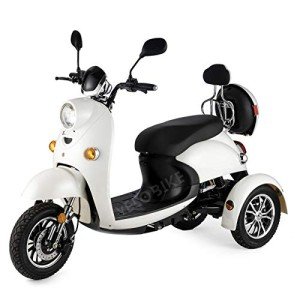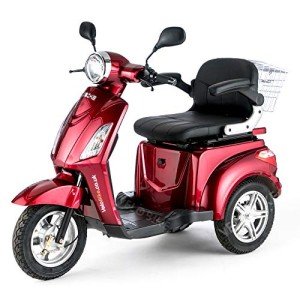
Veleco Faster
Add a review FollowOverview
-
Founded Date December 1, 1966
-
Sectors Transportation
-
Posted Jobs 0
-
Viewed 7
Company Description
Guide To Velco: The Intermediate Guide In Velco
Velcro: A Revolutionary Fastening Solution
Introduction
Velcro, a name that has actually practically become associated with hook-and-loop fasteners, has reinvented the way we consider securing products. Often a staple in different markets and households, Velcro provides an easy yet efficient solution to secure items without the requirement for buckles, buttons, or zippers. This article digs into the origins, systems, applications, and benefits of Velcro along with attending to some regularly asked questions.
The Origins of Velcro
Velcro was developed in the late 1940s by Swiss engineer George de Mestral. After a searching trip in the Alps, Mestral became interested by the burrs that adhered to his pet dog’s fur. Upon closer evaluation, he understood they worked through a system of tiny hooks that captured anything with a loop, consisting of material and fur. Acknowledging the capacity of this natural fastening system, Mestral embarked on a journey to recreate it in a synthetic type. By 1955, he had actually patented his creation, branding it “Velcro,” a mix of the French words “velours” (velour) and “crochet” (hook).

How Velcro Works
Velcro consists of two different pieces: a hook side and a loop side. These 2 parts interlock when compressed, developing a strong bond that can be easily released with an easy pull. The performance of Velcro can be broken down into these primary components:
| Component | Description |
|---|---|
| Hook Side | This side includes tiny hooks that capture and hold onto loops. |
| Loop Side | This side includes soft loops developed to yield to hooks when called. |
System of Fastening
- Interlocking: The hooks on one side capture the loops on the other, creating a physical interlock.
- Strength: The number of hooks and loops guarantees a substantial holding strength, making it appropriate for Velco both light and heavy-duty applications.
- Ease of Use: Velcro can be disengaged and re-engaged various times without losing its efficiency, setting it apart from more conventional fastening techniques.
Applications of Velcro
Velcro has discovered application throughout a myriad of sectors, consisting of:
-
Fashion Industry
- Sportswear
- Shoes (especially kids’s footwear)
- Accessories (belts, bags)
-
Medical Field
- Orthopedic devices
- Plasters
- Prosthetics
-
Automotive and Aerospace
- Seat covers
- Interior linings
- Safety gear
-
Family Items
- Curtains
- Rugs
- Organizers
-
Industrial Use
- Cabling
- Devices fastening
- Tools storage
Benefits of Velcro
The appeal of Velcro can be associated to a number of benefits it provides over conventional attaching approaches:
- Quick and Easy to Use: No tools are required, making it easy to use.
- Versatile: Works on different surfaces and products.
- Adjustable: Allows for easy modification in size (e.g., straps).
- Long lasting: Holds up under recurring usage.
- Washable: Maintains its function even after cleaning.
Possible Drawbacks
While Velcro is advantageous in numerous contexts, there are some restrictions to be familiar with:
- Noise: The noise of Velcro being pulled apart can be loud in peaceful settings.
- Use and Tear: Over time, excessive usage might result in fraying or minimized efficiency.
- Limitations with Heavy Loads: While it can hold substantial weight, it might not appropriate for very heavy items.
FAQs about Velcro
1. Is Velcro water resistant?
Yes, Velcro can be made from waterproof materials, making it suitable for outside and marine applications.
2. Can Velcro be reused?
Absolutely! Velcro is developed for repeated usage, and numerous items can be resealed and opened numerous times.
3. How do you tidy Velcro?
Cleaning Velcro is easy. You can use a lint roller or a soft brush to eliminate particles. For stubborn dirt, it may be rinsed gently with water.
4. Is Velcro strong enough to replace zippers?
In numerous applications, yes, Velcro can efficiently change zippers, especially in circumstances where quick attachment and unfastening are needed.
5. Are there various types of Velcro?
Yes, there are lots of types, consisting of differing widths, colors, adhesive strengths, and products created for different applications (i.e., high-temperature, outside, and so on).
Velcro has actually proven to be a versatile and ingenious attaching solution that has infiltrated several sectors, enhancing both daily life and commercial applications. Its ability to offer a reputable and easy-to-use technique of attaching makes it an enduring element of contemporary style. From casual garments to sophisticated medical applications, Velcro continues to promote its credibility as a staple attachment method for countless uses. Whether it’s for the style enthusiast or an expert in the medical field, Velcro stays an unsung hero on the planet of attaching technology.
By transforming how we connect and protect items, Velcro is a testimony to the power of innovative thinking and simpleness in design. As technology advances, we can only prepare for a lot more innovative applications for this exceptional development in the future.


